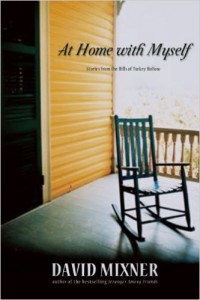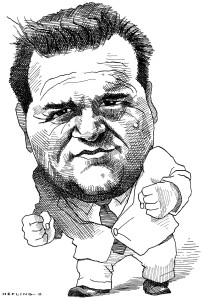 At Home with Myself: Stories from the Hills of Turkey Hollow
At Home with Myself: Stories from the Hills of Turkey Hollow
by David Mixner
Magnus Books. 244 pages, $18.
IN 2007, at the age of sixty, civil rights activist David Mixner embraced the notion of a Thoreau-like lifestyle, “mixed with a little Dr. Doolittle for good measure,” and traded a busy New York social calendar for Turkey Hollow, his own version of Walden in the Catskills. At Home with Myself tells the story of his “wilderness years” through a collection of vignettes organized thematically by the four seasons.
Mixner, whose autobiography Stranger Among Friends was published in 1996, does not intend his dispatches from Turkey Hollow to be understood as a biography. And yet, that quiet, often silent environment evidently put him in a reflective mood. Reminiscences—of political victories and defeats, of loves, and of far too many losses, largely due to hiv/aids—are threaded almost seamlessly into observations about the beauty and, at times, the banality of his life at Turkey Hollow.
Like his grandfather, “Buzzard Bait” Grove, David Mixner clearly relishes the opportunity to regale us with anecdotes and memories. Whereas “Buzzard Bait” was content with telling stories to family and friends on his summertime porch, Mixner’s medium of choice is the Internet. Much of At Home with Myself originally appeared on blogs such as The Huffington Post. Like journaling before it, blogging enables contemplation through the serial art of micro-narratives.
 Of course, the act of reading a live blog differs from the act of reading a collection of blog posts; and, unfortunately, blogs do not easily translate into books, as the narrative expectations are different. What the blog reader would have encountered as autonomous stories and polemical posts during Mixner’s Turkey Hollow years are now encountered as a single piece, and they lack the kind of narrative thread that a book requires. Indeed, many of Mixner’s vignettes repeat the same information and even employ the same phrasing. Characters such as Old Man Keller are introduced multiple times, while others, such as Steven, Mixner’s sometime housemate, are never properly introduced. This narrative jumping around is the result of Mixner’s decision to compress three years of writing into the four seasons of a single fictional year. While this could have been a fine strategy for culling some of the posts, it would have required a closer attention to detail to make it work as a narrative structure.
Of course, the act of reading a live blog differs from the act of reading a collection of blog posts; and, unfortunately, blogs do not easily translate into books, as the narrative expectations are different. What the blog reader would have encountered as autonomous stories and polemical posts during Mixner’s Turkey Hollow years are now encountered as a single piece, and they lack the kind of narrative thread that a book requires. Indeed, many of Mixner’s vignettes repeat the same information and even employ the same phrasing. Characters such as Old Man Keller are introduced multiple times, while others, such as Steven, Mixner’s sometime housemate, are never properly introduced. This narrative jumping around is the result of Mixner’s decision to compress three years of writing into the four seasons of a single fictional year. While this could have been a fine strategy for culling some of the posts, it would have required a closer attention to detail to make it work as a narrative structure.
Despite these shortcomings, Mixner’s stories from Turkey Hollow will be of interest to those who wish to learn more about his illustrious political career. Harvey Milk, Bill Clinton, Paul Newman, and numerous other political figures and celebrities pepper Mixner’s reminiscences. Perhaps the most compelling and heartfelt entries are the ones that explore the impact of aging from the perspective of one who managed to survive the devastating early years of hiv/aids. In “Quiet and Lonely in the Hills,” the most powerful entry, he writes, “the trauma of that time remains, even here in my new home. Sometimes I am lonely living in Turkey Hollow, but I have been lonely in some form since the beginning of the hiv/aids epidemic.” For Mixner, this loneliness isn’t about isolation in Turkey Hollow; it’s about the inability, regardless of place, to be with the countless peers who were lost to the disease.
While Mixner’s message is som-ber, it is ultimately life-affirming. “In Turkey Hollow,” he writes, “my loneliness is surrounded by beauty.” And that beauty, which Mixner devotes much of his book to describing, is alive and loving. From his housecats to the turkeys, bears, and deer who frequent his land, Mixner is never truly alone. A lover of animals, he finds deep and meaningful companionship with these visitors. Indeed, when medical issues force him to return to New York, it is painful to read about his separation from companions such as Attila and Kate, the deer with whom he had a particularly powerful connection.
At Home with Myself is a flawed but deeply personal book. Although it lacks a strong narrative unity, it contains many beautiful passages and a number of fully realized characters. It can’t be seen as a stand-alone autobiography, but together with Mixner’s Stranger Among Friends, it paints a vivid self-portrait of an essential voice in the contemporary gay rights movement.
Christopher J. Finlay, PhD, is a lecturer in communications at Cal State, San Bernardino.





